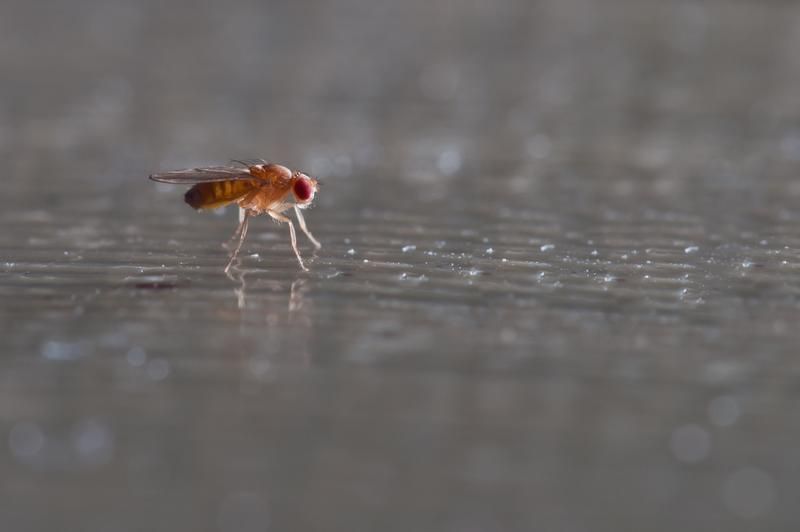Painting by numbers
The skin colour of humans ranges from pale pinkish-white to very dark brown and relates largely to the amount of melanin produced by specialized cells in the body. The synthesis of melanin is under the influence of a bewildering array of genes, each of which naturally occurs in a variety of different forms or alleles, thus accounting for the wide variety of skin colours found in our species. But how precisely the variation is brought about is still unknown.

Drosophila melanogaster
Fotolia, Roblan
Nine genes account for pigmentation in the fruit fly
Colour also differs, albeit sometimes more subtly, in many other animals. For example, the colour of the abdomen in the fruit fly Drosophila melanogaster varies substantially. Because flies are much more amenable to genetic study than humans, we know a good deal about pigmentation in this species. At least nine genes are directly involved in the synthesis of pigment, together with a number of others that indirectly affect the pattern of pigmentation. Nevertheless, it is not clear whether changes in these genes account for the variation in the pigmentation of natural populations of flies or whether differences in other genes might somehow be responsible.
DNA sequence comparison elucidates genetic variation
The issue has been tackled by Héloïse Bastide and Andrea Betancourt at the Institute of Population Genetics of the University of Veterinary Medicine, Vienna (Vetmeduni Vienna). The results are published in the online journal PLOS Genetics and point to a general method for studying variation in natural populations. The researchers examined 8,000 female flies, split into 5 groups, and chose 100 of the lightest and 100 of the darkest from each group for genetic comparison. Each group of light and dark flies was pooled and its DNA sequenced, resulting in a catalogue of the genetic differences between light and dark flies at over three million positions in the fly genome. Sophisticated statistical methods were used to compare the differences between the two groups, leading to the discovery of 17 sites where variation, so-called single-nucleotide polymorphisms or SNPs (pronounced "snips"), seemed to be associated with the extent of female abdominal pigmentation.
Effective method to study natural variation
Gratifyingly, the SNPs were found to lie in or close to genes known to be involved in pigment synthesis, in particular the tan and bric-à-brac1 genes. Most of the SNPs were not in the coding sequence of these genes but instead in nearby sequences that had previously been shown to regulate their activity. In other words, the variation in the colour of female flies is not a result of changes to the genes that produce pigments but stems instead from subtle alterations in the regulation of the pigmentation genes.Bastide and Betancourt are naturally excited by their findings. As they say, "Our work has taught us a lot about how pigment production can be controlled and at least some of our conclusions may apply to other species as well. But even more importantly, our experiments show that pooling and sequencing samples can represent an effective and low-cost method to examine the basis of natural variation in populations."
Original publication
Héloïse Bastide, Andrea Betancourt, et al., “A Genome-Wide, Fine-Scale Map of Natural Pigmentation Variation in Drosophila melanogaster”, PLOS Genetics, 2013
Original publication
Héloïse Bastide, Andrea Betancourt, et al., “A Genome-Wide, Fine-Scale Map of Natural Pigmentation Variation in Drosophila melanogaster”, PLOS Genetics, 2013
Topics
Organizations
Other news from the department science

Get the life science industry in your inbox
By submitting this form you agree that LUMITOS AG will send you the newsletter(s) selected above by email. Your data will not be passed on to third parties. Your data will be stored and processed in accordance with our data protection regulations. LUMITOS may contact you by email for the purpose of advertising or market and opinion surveys. You can revoke your consent at any time without giving reasons to LUMITOS AG, Ernst-Augustin-Str. 2, 12489 Berlin, Germany or by e-mail at revoke@lumitos.com with effect for the future. In addition, each email contains a link to unsubscribe from the corresponding newsletter.





















































